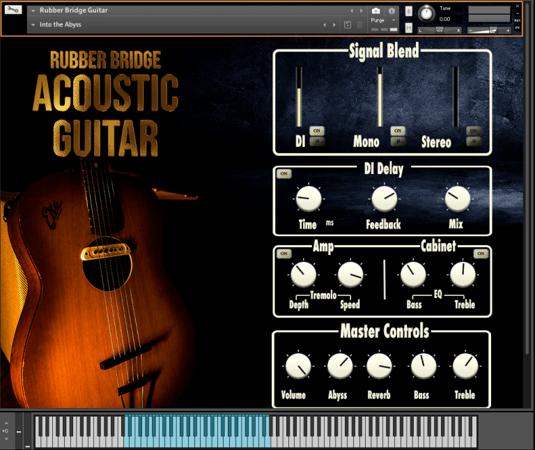Rubber Bridge Acoustic Guitar KONTAKT [FREE]
30/12/2023 | KONTAKT | 149 MB
Rubber bridge guitars have become a widespread phenomenon in the music scene, with their impact extending far beyond just altering the sound of a guitar. Surprisingly, the simple act of replacing a guitar’s bridge with a piece of rubber has significantly influenced the production and songwriting techniques of notable artists like Taylor Swift, Aaron Dessner, Phoebe Bridgers and Olivia Rodrigo.
My desire to make this unique guitar sound accessible to everyone, led to the ambitious idea of sampling a rubber bridge guitar. However, the project faced two challenges: my lack of experience, both in sampling acoustic guitars and in modifying guitars. Nevertheless, I decided to explore this uncharted territory!
Finding a Guitar
The first step was finding a suitable guitar for the experiment. Opting for an old Archtop parlour guitar seemed like the most straightforward choice, given their floating bridges would be easier to replace. Vintage Harmony or Silvertone parlour guitars were popular choices in this realm, but considering availability and cost in the UK, the search led to an Italian guitar brand called EKO. After a minor setback in a failed eBay transaction, I discovered another EKO parlour guitar within reach.
With the guitar in hand, the next step involved obtaining the necessary materials, including jewellers bench block rubber, flat wound strings, and a magnetic sound hole pickup. While fitting the rubber bridge itself proved relatively straightforward, the challenge lay in cutting the rubber to size. Overcoming hurdles with inadequate tools, perseverance prevailed in getting the rubber ready for swapping the existing bridge.
Sampling the Rubber Bridge Guitar
Sampling the guitar presented a new set of questions: which notes to sample, at what volumes, and whether to include round robin samples for realism? I opted to sample every three notes across a range of octaves, three velocities (soft, medium, and hard), and two round robins. The process was time-consuming but promised a rewarding outcome. Subsequently building the instrument in Kontakt involved trial and error, fine-tuning velocity layers, and noise reduction to achieve a natural and clean sound.
Finally, creating the user interface marked the most enjoyable phase, involving the addition of effects, controls, buttons, dials, and background graphics. The result? The Rubber Bridge Acoustic Guitar for Kontakt—an instrument that transcends the boundaries of traditional guitar sounds.
To experience the journey and hear the remarkable transformation for yourself, check out the demo and walkthrough video. The Rubber Bridge is not just a modification; it’s a testament to the endless possibilities of redefining the boundaries of music and sound.
Requires Full Version of Native Instruments Kontakt (Version 6.8).
Please REPORT in Comment Broken Links


